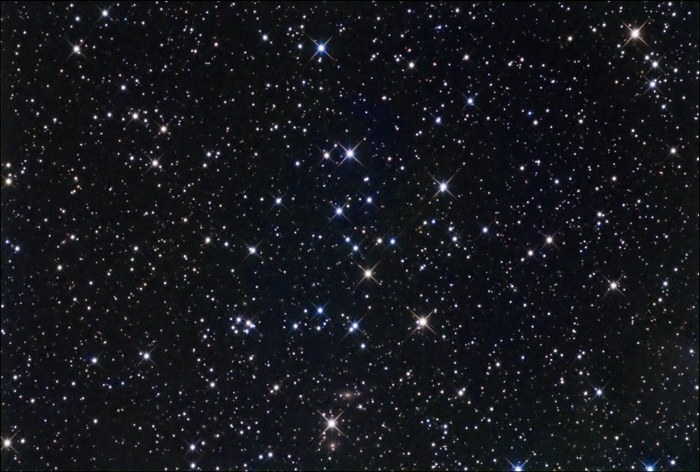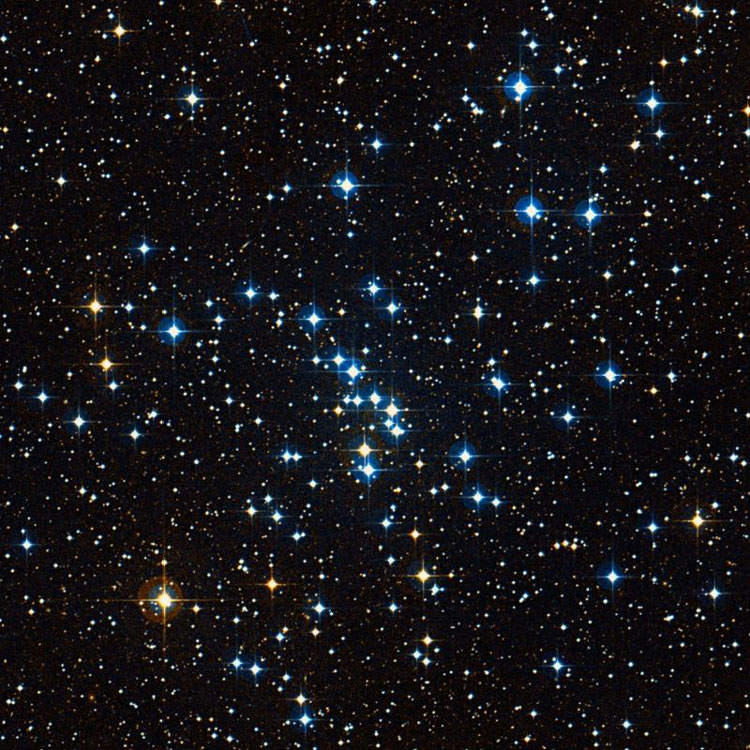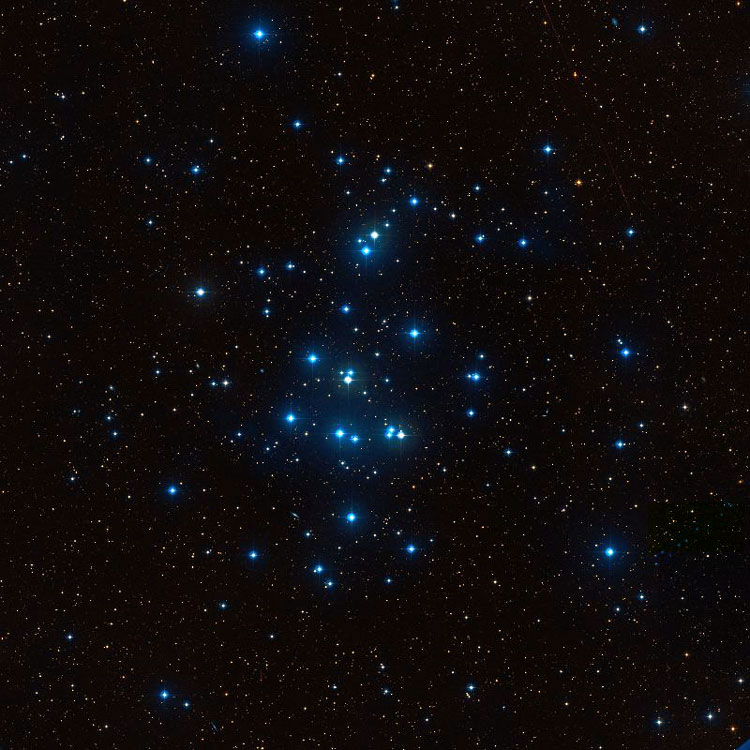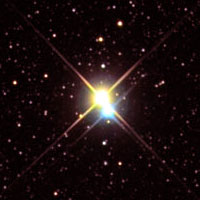
When discovered by William Herschel in 1785, he described this open cluster as "clustering, large scattered stars, many of equal size." Not exactly an awe-inspiring description, but then, this isn't exactly an awe-inspiring star cluster. Still, it has a few points of interest.
This cluster is somewhat large and sparse, with about 15 stars in all. They are scattered loosely and most of them are of similar magnitude. At one end of the cluster is a little circular knot of fainter stars. Large and unimpressive. The best view was at 100X.
Most of the rest of the open clusters left on my observing list are in the constellation of Monoceros (the Unicorn), but none of those stars are visible from my back yard except with averted vision, making finding them difficult. Further, the clusters are interspersed within the dense Milky Way, so it would be hard to tell one from the other without detailed finder charts. So I had to skip those for tonight.
Not to worry, there were several other wonderful clusters within reach of my urban skies. I turned first to the constellation of Hydra.

It has been a long time since I last viewed this star cluster. At 100X, this cluster fills the FOV. Several dozen stars of varying brightness make this a showpiece.

With my 30mm, I can't quite fit the entire cluster into the field of view. The familiar house-shaped beehive is in the middle. Many bright and several much fainter stars make it almost 3D. A few members appear bluish-white, although most are yellow or white.

While in Cancer, I wanted to take another look at this fine double star. At 100X, this pair is nicely separated and looks similar to Albireo, except the colors are less intense. The brighter star is pale yellow and the companion is a very pale blue.
Looking around again, the darkest part of the sky was back in Gemini, where I had started tonight. Looking at my star charts, I decided to see how well my telescope could make out the Eskimo Nebula.

The central star is nearly as bright as a nearby field star. At 250X with direct vision, I could detect nebulosity around the central star, but no distinct shape. Using averted vision, the nebulosity was wide and circular, forming two intensities of rings, with the brighter ring near the center.
I noticed the sky seemed to be getting brighter. Looking up from my telescope, large banks of clouds had begun moving in, scattering the city lights even more. Time to call it a night.